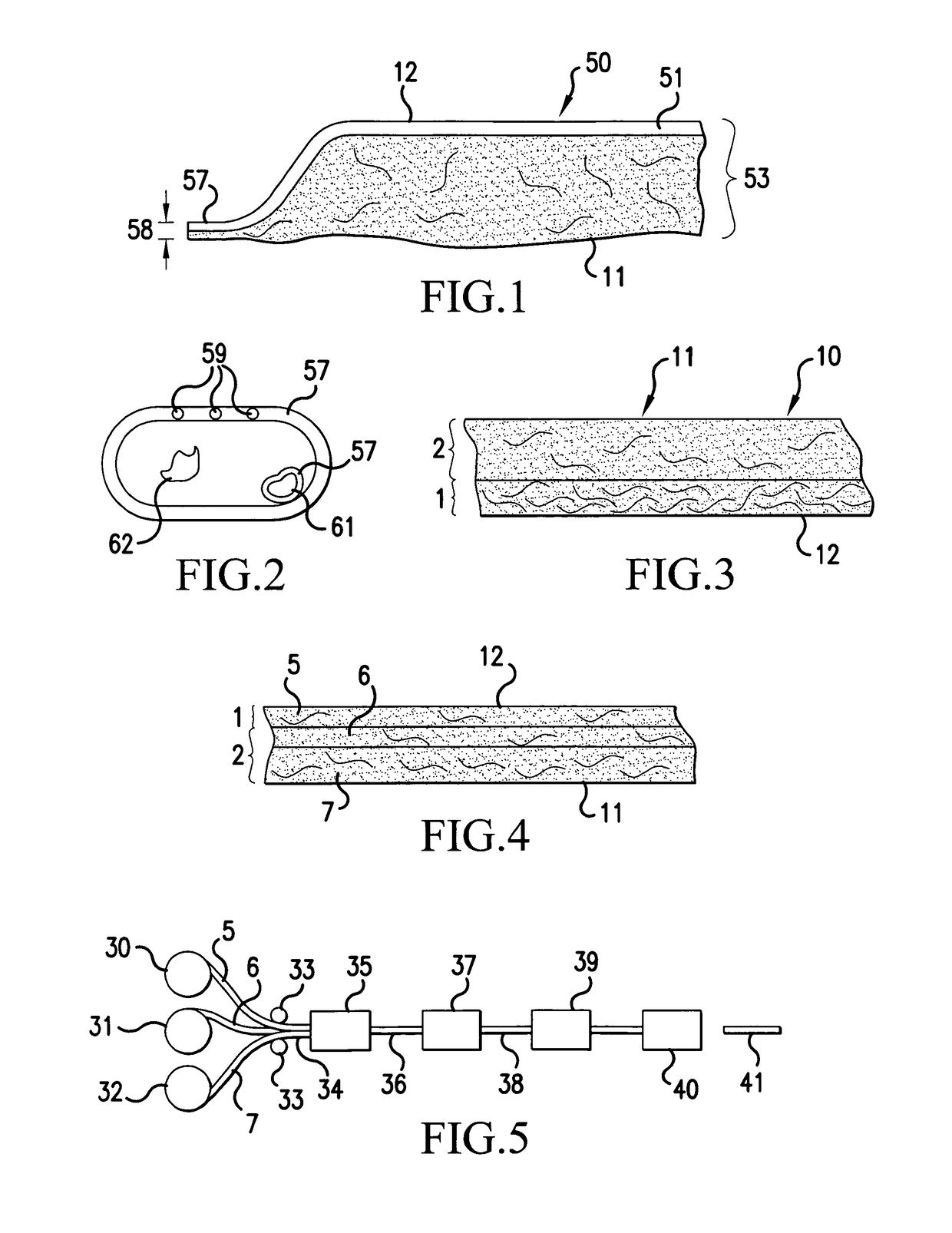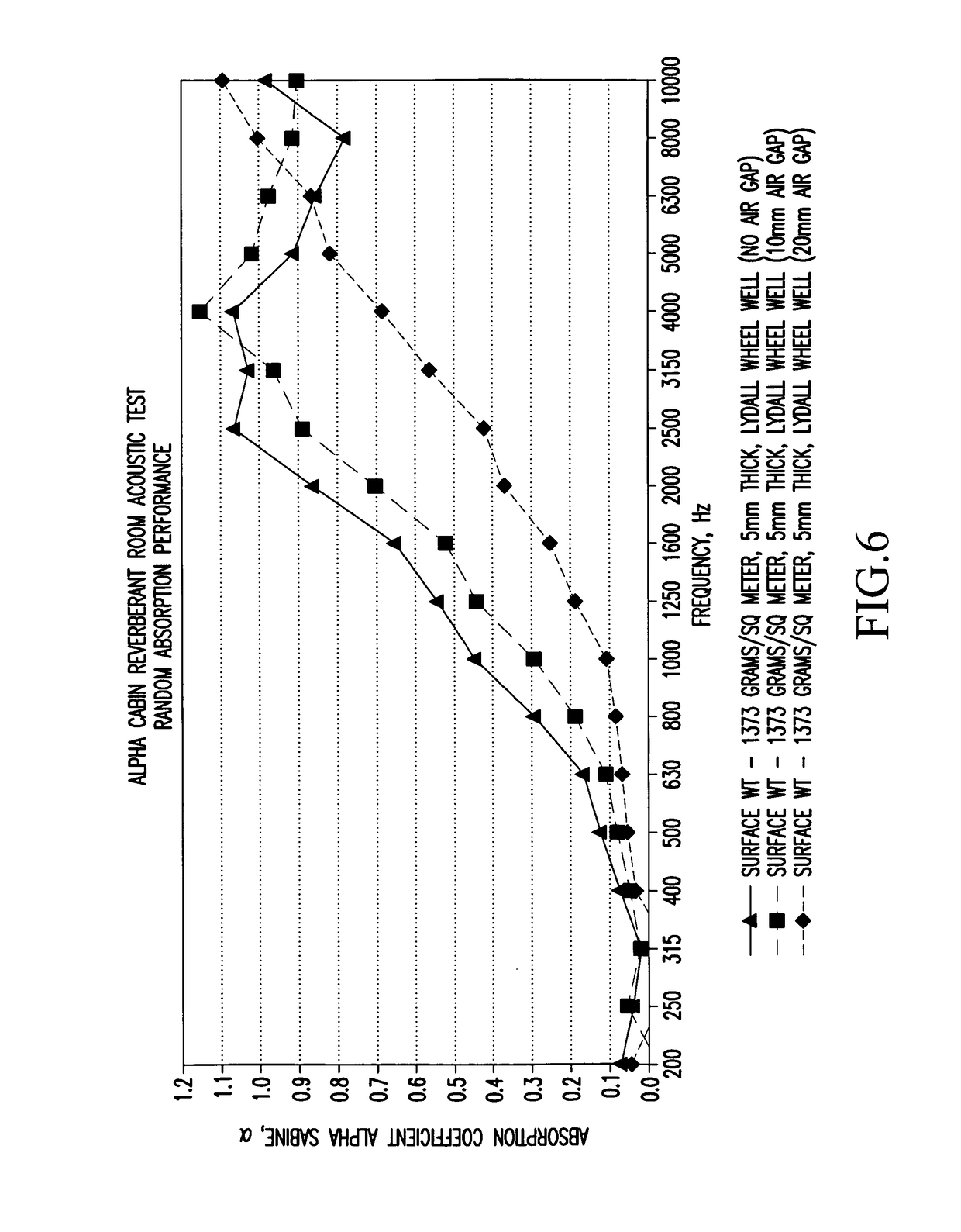Molded and shaped acoustical insulating vehicle panel and method of making the same
a technology of acoustical insulation and a vehicle panel, which is applied in the direction of weaving, transportation and packaging, layered products, etc., can solve the problems of difficult to meet the needs of customers, so as to reduce the cost of the improved panel, the effect of improving the quality and improving the appearan
- Summary
- Abstract
- Description
- Claims
- Application Information
AI Technical Summary
Benefits of technology
Problems solved by technology
Method used
Image
Examples
examples
[0051]In this first example, a specific example of a three-layer product that utilizes three individual carding machines will be described in detail.
[0052]The first layer is composed of 2 different polyester fibers. The predominant fiber is a black polyester bicomponent with a sheath melting point of about 230° F. (110° C.). This fiber is 70% of the blend ratio. The second fiber in the first layer is a black polyester staple, and it is 30% of the blend. The two fibers are mixed to the above ratio by weight and then thoroughly opened and blended and introduced into a carding machine. The card produces a web that is carried by the cross-lapper which creates horizontal laps of the carded web. The number of horizontal laps is set so the total weight of the first layer is 7.0 ounces per square yard (237 grams per square meter) in the final needled composite. The first portion of the present invention is comprised entirely of the first carded layer.
[0053]The second carded layer is compose...
PUM
| Property | Measurement | Unit |
|---|---|---|
| density | aaaaa | aaaaa |
| density | aaaaa | aaaaa |
| insulation density | aaaaa | aaaaa |
Abstract
Description
Claims
Application Information
 Login to View More
Login to View More - R&D
- Intellectual Property
- Life Sciences
- Materials
- Tech Scout
- Unparalleled Data Quality
- Higher Quality Content
- 60% Fewer Hallucinations
Browse by: Latest US Patents, China's latest patents, Technical Efficacy Thesaurus, Application Domain, Technology Topic, Popular Technical Reports.
© 2025 PatSnap. All rights reserved.Legal|Privacy policy|Modern Slavery Act Transparency Statement|Sitemap|About US| Contact US: help@patsnap.com


